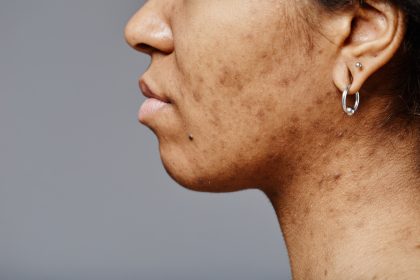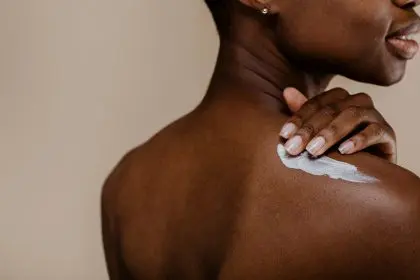Summer outdoor activities create countless opportunities for sun exposure that can lead to painful burns, premature aging, and serious long-term health consequences. Spray sunscreen has revolutionized sun protection by offering convenient application methods that appeal to busy families and active individuals who need quick, effective coverage for outdoor adventures.
However, the convenience of spray sunscreen comes with unique challenges that can compromise protection when proper application techniques are ignored. Understanding these common mistakes and mastering correct application methods ensures reliable protection against harmful ultraviolet radiation that can cause immediate discomfort and lasting damage to skin health.
The popularity of spray sunscreen continues to grow, but many users unknowingly sabotage their protection through improper application techniques that leave skin vulnerable to UV damage despite diligent sunscreen use.
Inadequate coverage amounts compromise protection levels
The first major mistake involves applying insufficient quantities of spray sunscreen to achieve the protection levels indicated on product labels. Most people use far less sunscreen than necessary, applying thin layers that provide only a fraction of the advertised SPF protection.
Adults require approximately one ounce of sunscreen to adequately cover all exposed skin surfaces, equivalent to filling a standard shot glass. This generous amount ensures that skin receives the thickness of coverage necessary to block UV rays effectively and maintain protection throughout extended sun exposure.
With spray sunscreen, measuring exact quantities becomes challenging since the product disperses in mist form rather than the measurable portions possible with lotion formulations. Users must develop visual cues to ensure adequate coverage, looking for visible coating on skin surfaces before rubbing the product in thoroughly.
The golf ball-sized amount guideline provides a practical reference for each major body section, including arms, legs, torso, and back. This generous application approach helps compensate for the uneven distribution that can occur with spray application methods.
Failure to rub in spray sunscreen properly
The second critical error involves treating spray sunscreen like an aerosol coating that doesn’t require physical manipulation after application. Simply misting sunscreen onto skin surfaces without rubbing it in creates uneven coverage patterns that leave vulnerable areas exposed to UV damage.
Spray sunscreen requires thorough rubbing to ensure even distribution across all skin surfaces and to help the product adhere properly to skin. The rubbing action helps break up any clumps or concentrated areas while spreading the protective ingredients uniformly across the treatment area.
Many people assume that spray application eliminates the need for the rubbing step required with lotion sunscreens, but this assumption creates dangerous gaps in protection that can result in painful burns in missed areas. The convenience of spray application should not eliminate the important step of ensuring even coverage.
Spraying sunscreen directly into palms before applying to body areas provides better control over distribution and makes the rubbing step more natural and thorough. This technique combines the convenience of spray application with the coverage assurance of manual distribution.
Incorrect spray technique reduces effectiveness
The third mistake involves poor spray technique that fails to deliver adequate product to skin surfaces. Rushing through application with quick, distant spraying motions leaves skin with insufficient coverage that cannot provide reliable protection against UV exposure.
Each body area should receive sustained spray application for at least six seconds from a distance of four to six inches to ensure adequate product deposition. Closer application allows better coverage control, while sustained spraying ensures sufficient product reaches the skin surface.
Distant spraying causes product loss to air dispersion, while quick passes don’t allow enough product to accumulate on skin surfaces. The proper technique requires methodical, thorough coverage of each body section with adequate spray duration and appropriate distance.
Multiple passes over each area help ensure complete coverage, especially for areas that are difficult to reach or require awkward positioning during application. Taking time to apply spray sunscreen properly prevents the patchy coverage that leads to unexpected burns in missed spots.
Indoor application creates health hazards
The fourth dangerous mistake involves applying spray sunscreen in enclosed spaces where aerosol particles can be inhaled and cause respiratory irritation. Indoor application exposes users to concentrated chemicals that can irritate throat and lung tissues, particularly in people with breathing sensitivities.
Spray sunscreen should always be applied outdoors or in well-ventilated areas where aerosol particles can disperse safely without creating inhalation hazards. The propellants and active ingredients in spray formulations can cause coughing, throat irritation, and breathing difficulties when used in confined spaces.
Children are particularly vulnerable to inhalation injuries from spray sunscreen application, making outdoor application essential for family safety. Parents should never apply spray sunscreen to children in cars, bathrooms, or other enclosed spaces where aerosol concentration can reach harmful levels.
The outdoor application requirement means planning ahead for sun protection rather than applying sunscreen as an afterthought when already exposed to UV rays. This proactive approach ensures both safety and effectiveness of spray sunscreen use.
Wind interference disrupts proper application
The fifth application error involves attempting to use spray sunscreen in windy conditions that disperse the product before it can reach skin surfaces. Wind can carry away significant portions of spray sunscreen, leaving users with false confidence in their protection levels.
Strong winds can blow spray sunscreen away from intended application areas, creating uneven coverage patterns that leave some skin areas completely unprotected. This environmental factor can waste product while failing to provide adequate protection for outdoor activities.
Seeking sheltered areas for spray sunscreen application or switching to lotion formulations during windy conditions ensures better coverage and more reliable protection. Natural windbreaks like buildings, trees, or vehicles can provide sufficient protection from wind interference during application.
The timing of application becomes crucial in windy conditions, with early morning or late afternoon often providing calmer air conditions that allow proper spray sunscreen application before peak sun exposure hours.
Single application layers provide insufficient protection
The sixth mistake involves relying on a single layer of spray sunscreen to provide full protection throughout extended sun exposure periods. One thin layer rarely provides the coverage thickness necessary to achieve labeled SPF protection levels.
Multiple layers of spray sunscreen help ensure adequate coverage thickness while compensating for any missed areas during initial application. The layering approach provides redundancy that helps maintain protection even if some product is removed through activity or perspiration.
Each layer should be applied using proper technique with adequate spray duration and thorough rubbing to ensure effective coverage. The multiple layer approach takes more time but provides significantly better protection for extended outdoor activities.
Reapplication timing becomes critical with spray sunscreen, as the thin layers typical of spray application may not provide the same duration of protection as thicker lotion applications. More frequent reapplication helps maintain consistent protection levels throughout sun exposure periods.
Ignoring expiration dates compromises protection
The seventh critical error involves using expired spray sunscreen that has lost its protective effectiveness over time. Sunscreen ingredients degrade through exposure to heat, light, and air, reducing their ability to block UV rays and protect skin from damage.
Expired sunscreen may provide false confidence while failing to deliver adequate protection, leading to severe burns despite diligent application efforts. The chemical breakdown of active ingredients can render sunscreen completely ineffective while maintaining its normal appearance and consistency.
Checking expiration dates should become a routine part of sun protection preparation, particularly at the beginning of each sun season when stored products may have exceeded their effective lifespan. Replacing expired products ensures reliable protection for important outdoor activities.
The degradation process accelerates when sunscreen is stored in hot environments like cars or direct sunlight, making proper storage essential for maintaining product effectiveness throughout its labeled lifespan.
Improper storage reduces sunscreen potency
The eighth mistake involves storing spray sunscreen in high-temperature environments that accelerate ingredient degradation and reduce protective effectiveness. Heat exposure from car storage, direct sunlight, or hot storage areas can destroy active ingredients and compromise protection.
High temperatures can cause ingredient separation, chemical breakdown, and propellant issues that affect both application quality and protective effectiveness. Proper storage in cool, dry locations helps maintain product integrity throughout its useful life.
Car storage during summer months exposes sunscreen to extreme temperatures that can quickly degrade active ingredients and affect spray mechanism function. Carrying sunscreen in cooler bags or storing it in shaded areas helps preserve effectiveness during outdoor activities.
Temperature fluctuations from repeated heating and cooling cycles can be particularly damaging to spray sunscreen formulations, making consistent cool storage important for maintaining reliable protection levels.
Skipping reapplication allows protection to fail
The ninth crucial mistake involves applying spray sunscreen once and assuming protection will last throughout extended sun exposure periods. All sunscreen formulations require regular reapplication to maintain effective protection as products are removed through sweating, swimming, and normal activity.
The two-hour reapplication guideline provides a general framework, but active conditions may require more frequent application to maintain adequate protection. Swimming, sweating, and toweling off remove sunscreen and create immediate needs for reapplication.
Setting phone alarms or reminders helps ensure consistent reapplication timing during busy outdoor activities when time awareness can be compromised. Regular reapplication becomes particularly important for children who may not recognize the need for renewed protection.
Water-resistant formulations provide longer protection during swimming activities, but they still require reapplication after extended water exposure or toweling off. No sunscreen provides permanent protection that eliminates the need for regular reapplication.
Missing difficult-to-reach areas creates burn risks
The tenth application error involves failing to adequately cover hard-to-reach areas that are particularly vulnerable to UV damage. Areas like the back, behind ears, feet, and scalp line often receive inadequate coverage that leads to painful burns in unexpected locations.
Enlisting help from family members or friends ensures thorough coverage of areas that are difficult to reach independently. The spray format can make it easier to cover some challenging areas, but proper technique and assistance remain important for complete protection.
Using mirrors during application helps identify missed areas and ensures thorough coverage of all exposed skin surfaces. The visual feedback from mirror use can reveal coverage gaps that might otherwise go unnoticed until burning occurs.
Paying special attention to commonly missed areas like ear tips, nose bridge, lip line, and foot tops helps prevent the localized burns that can occur even when most skin areas receive adequate protection.
Ignoring skin sensitivity and allergic reactions
The eleventh mistake involves continuing to use spray sunscreen products that cause skin irritation or allergic reactions. Some individuals may be sensitive to specific ingredients in spray formulations, requiring alternative product selections or application methods.
Patch testing new spray sunscreen products on small skin areas before full application helps identify potential sensitivity issues before they affect large body areas. This testing approach prevents widespread irritation that can compromise outdoor activity enjoyment.
Chemical sensitivities may require mineral-based sunscreen formulations that use zinc oxide or titanium dioxide instead of chemical UV filters. These physical barriers provide effective protection while avoiding ingredients that trigger sensitivity reactions.
Reading ingredient labels helps identify potential allergens and avoid products containing known irritants. People with sensitive skin should consult with healthcare providers about appropriate sunscreen selections for their specific needs.
Combining spray sunscreen with other products incorrectly
The twelfth and final mistake involves improper combination of spray sunscreen with other skincare products, makeup, or insect repellents that can interfere with protection effectiveness or create safety hazards.
Applying spray sunscreen over makeup or moisturizers may prevent proper skin adhesion and reduce protection effectiveness. The proper application sequence involves clean skin, sunscreen application, and then other products as needed.
Combining spray sunscreen with aerosol insect repellents can create chemical interactions that reduce effectiveness of both products. Separate application with appropriate timing between products helps ensure both protection types remain effective.
Understanding product compatibility helps optimize protection while avoiding dangerous combinations that can cause skin irritation or reduce effectiveness of protective measures during outdoor activities.
Mastering proper spray sunscreen technique
Developing effective spray sunscreen habits requires understanding the unique requirements of this application method while maintaining the generous coverage necessary for reliable protection. The convenience of spray application should enhance rather than compromise sun protection effectiveness.
Proper technique involves generous application amounts, thorough rubbing for even distribution, adequate spray duration for each body area, and appropriate environmental conditions for safe application. These fundamental principles ensure reliable protection for outdoor activities.
Consistency in application technique and timing helps develop muscle memory that makes proper spray sunscreen use automatic rather than requiring conscious effort during each application. This habit formation supports long-term sun protection success.
The investment in proper spray sunscreen technique pays dividends in prevented burns, reduced skin damage, and maintained skin health throughout years of outdoor activity enjoyment.
Building comprehensive sun protection strategies
Spray sunscreen represents just one component of comprehensive sun protection that should include appropriate clothing, shade seeking, timing considerations, and lifestyle adjustments that minimize UV exposure risks during outdoor activities.
Understanding the strengths and limitations of spray sunscreen helps users make informed decisions about when and how to use this protection method most effectively. The convenience benefits work best when combined with proper application technique and realistic expectations.
Your commitment to mastering proper spray sunscreen use demonstrates dedication to long-term skin health and protection against the cumulative effects of UV damage that can affect appearance, comfort, and health throughout life.


















